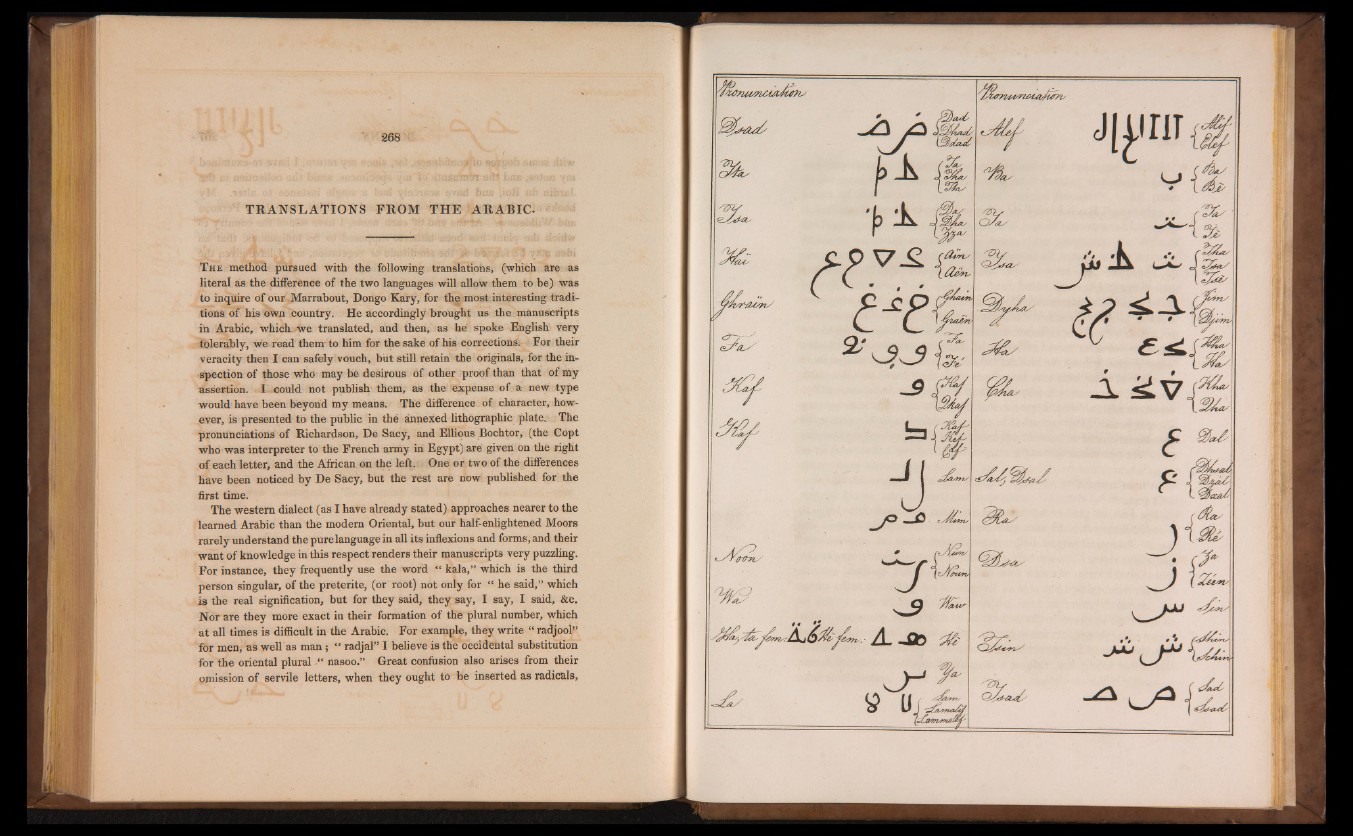
TRANSLATIONS FROM TH E ARABIC.
T h e method pursued with the following translations, (which are as
literal as the difference of the two languages will allow them to be) was
to inquire o f our Marrabout, Dongo Kary, for the most interesting traditions
o f his own country. He accordingly brought us the manuscripts
in Arabic, which w e translated, and then, as he spoke English very
tolerably, we read them' to him for the sake of his corrections. For their
veracity then I can safely vouch, but still retain the originals, for the inspection
of those who may be desirous of other proof than that of my
assertion. I could not publish them, as the expense of a new type
would have been beyond my means. The difference of character, however,
is presented to the public in thé annexed lithographic plate. The
pronunciations of Richardson, D e Sacy, and Ellious Bochtor, (the Copt
who was interpreter to the French army in Egypt) are given on the right
of each letter, and the African on the left. One or two of the differences
have been noticed by D e Sacy, but the rest are now published for the
first time.
The western dialect (as I have already stated) approaches nearer to the
learned Arabic than the modem Oriental, but our half-enlightened Moors
rarely understand the pure language in all its inflexions and forms, and their
want of knowledge in this respect renders their manuscripts very puzzling.
For instance, they frequently use the word “ kala,” which is the third
person singular, of the preterite, (or root) not only for “ he said,” which
is the real signification, but for they said, they say, I say, I said, &c.
Nor are they more exact in their formation of the plural number, which
at all times is difficult in the Arabic. For example, they write “ radjool”
for men, as w ell as man 5 “ radjal” I believe is the occidental substitution
for the oriental plural nasoo.” Great confusion also arises from their
omission of servile letters, when they ought to be inserted as radicals,